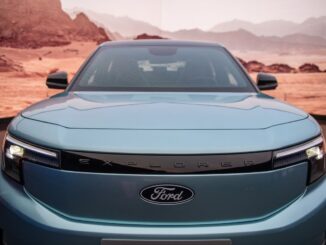
Automakers screwed up the market for decades with price increases and going upscale. Now they pay the price with dismal volume.
By Wolf Richter for WOLF STREET.
Total new vehicles delivered to retail customers and fleets (dominated by rental fleets) in the US rose by 12.4% from the dismal levels a year earlier to 15.46 million vehicles.
The two best years were 2000 and 2016, with 17.4 million and 17.5 million vehicles sold. In 2023, sales were about 11% below the 2000 high and 11.6% below the 2016 high. And compared to 1986, sales were down 3.7%, and compared to 1985, sales were flat. That was nearly four decades ago! Over the same period, the US population has increased by 40%!
Screwing up the market with price increases and going upscale.
Turns out, after decades of price increases and going upscale to maximize revenues and profits, automakers have created a market in the US where the average American can no longer afford a new vehicle, and they’re buying used vehicles – financially, a good strategy.
Automakers have thereby screwed up the US market to where new vehicle sales are languishing in the best years and plunging in the bad years.
Full-size pickup trucks are a great example of price increases and going upscale. There have been only four automakers that sell a high volume of full-size pickup trucks in the US: GM, Ford, Stellantis, and Toyota. Nissan will discontinue its Titan in 2024 due to low sales. Two new players are now entering the market, still with small numbers, Rivian and Tesla.
So, for now, four companies are selling full-sized trucks in volume, with huge price increases year after year, and grotesque profit margins, a testimony of oligopolistic pricing behavior.
We here at WOLF STREET have developed our own new-vehicle price index based on the bestselling truck, the Ford F-150, and the bestselling car, the Toyota Camry. We discussed this and our notion about the pickup truck oligopoly here. And for your amusement, this is the chart – since 1990, the MSRP of the F-150 XLT has shot up by 267%, including a spike of 39.4% from 2020:
The average transaction price including all incentives, discounts, and addendum stickers had spiked by 36% during the pandemic, from $34,900 in December 2019 to an absurd $47,300 in December 2022, according to JD Power data.
Then in 2023, inventory was back on dealer lots, and discounts and incentives were piled on, and most of the odious addendum stickers vanished (if you see an addendum sticker, “just say no”), and by December 2023, the average transaction price had dipped by 2.7% to a still absurd $46,055:
The biggest automakers in the US.
General Motors, #1: Sales of all its brands in the US in the year 2023 rose 14.1% to 2.59 million vehicles. But this was down by 16% from its recent peak in 2015.
Sales of GM’s Bolt and Bolt EUV, its old EVs, surged by 62.8% in 2023, to 62,045 vehicles. After the price cuts by GM, and after the federal tax credit, a base Bolt could be bought for just a little over $20,000. And there is demand for decent vehicles in this price category. But 2023 was the swan song for them, GM killed them at the end of the year.
GM is now launching several other EV models based on its new Ultium platform, but sales just started and are minuscule.
GM’s sales had dropped each of the four years before the pandemic. Then the semiconductor shortages wiped out its inventory. But in 2023, inventories were back to normal. You can kind of draw a mental line from 2015 through 2019 and then extend that line, and it comes out just a above 2023, which makes for an ugly trend.
Toyota, #2: Sales of Toyota and Lexus brands combined in the US rose 6.6% in 2023, to 2.25 million vehicles. But this was down by 10% from its recent peak in 2015.
Toyota has no EV to speak of. A year ago, some lights went on and Toyota’s longtime anti-EV CEO Akio Toyoda was forced out and replaced by a new guy, Lexus boss Koji Sato, under whom Toyota is now trying to build an EV strategy.
The trend in this chart – that line from 2015 through 2019 and extended toward 2023 – looks just as ugly as GM’s:
Ford, #3: Sales by its Ford and Lincoln brands combined rose 7.1% in 2023 to 1.996 million vehicles (OK, 2.0 million), after seven years in a row of declines. From the recent peak in 2015, sales are down 23%.
EV sales rose by 17.9% to 72,608. This includes a 54.7% jump in sales of the F-150 Lightning, to 24,165 trucks. Tiny startup Rivian has thereby blown past Ford’s electric truck sales. That’s how good Ford is at selling EVs as it’s now busy staring down an anti-EV revolt by its dealers.
Interestingly, in Q4, sales of ICE vehicles and hybrids dropped 0.4% year-over-year, while EV sales surged 27.5%. The surge in EV sales caused overall sales to rise 0.8% in Q4 year-over-year. Without EVs, overall sales would have declined 0.3% year-over-year.
Ugly, ugly, ugly. I’m not even sure where to draw the mental trend line. But hey, Ford is blowing billions of dollars on share buybacks:
Hyundai-Kia, #4. Hyundai is the parent company of Kia, with Hyundai holding a 33.9% stake in Kia, and Kia holding stakes in Hyundai subsidiaries, and they share vehicle platforms. So for our purposes here, we look at the duo as one automaker with different brands.
And they’re rocking and rolling. They surpassed FCA US (Stellantis) in sales in 2023 for the first time. Year-over-year, sales rose 11.7% to a new record of 1.58 million vehicles (Hyundai 801,195 and Kia 782,451).
EV sales: Hyundai’s sales of Ioniq EVs soared by 76% to 46,917 vehicles. It also sells an electric version of its Kona crossover, but didn’t separate out the sales of the electric version (all Kona sales totaled 79,116). Kia’s EV sales dipped 2% to 19,997 vehicles.
Stellantis #5: Oh dear, FCA US sales dropped another 1.3% in 2023, to 1.53 million vehicles. From the recent peak in 2015, sales have plunged by 33%. FCA US was surpassed by Hyundai-Kia for the first time, after having been surpassed by Toyota years ago.
It’s not mass-producing any battery-electric EVs, but it’s mass-producing announcements about them. The first EV models are supposed to trickle out by the end of 2024, it said.
In terms of ugliness, the trend in this chart is in a category of its own, speaking of an existential crisis:
The big three US automakers? GM, Ford, and Stellantis are the big three US automakers, or what remains of them. Toyota is #2 in the US, and it manufactures vehicles in the US, but it’s a Japanese company, so a foreign automaker. Hyundai-Kia is #4 in the US, and ahead of Stellantis, but it is a foreign duo, though they manufacture cars in the US. Stellantis is a European company that bought FCA US, but for whatever reason, we still consider FCA US a US automaker, though FCA US imports a lot of vehicles. So the lines are getting blurred.
We now have a fourth US automaker that isn’t that big yet in terms of US sales, but has been getting bigger fast: Tesla. All its vehicles that it sells in the US are made in the US – unlike the other US automakers. So now, we’re needing to talk about the “big four US automakers?” Or the big three, with Tesla in and foreign automaker Stellantis out?
Tesla doesn’t disclose US sales. It only discloses global sales. But there’s the registrations data. Per registrations, the Model Y has become the #2 bestselling vehicle in the US, behind the F-series truck. But registrations data lag. And we have them only through Q3 2023.
Tesla’s global deliveries in Q4 rose by 11% from the prior quarter, and by 20% year-over-year. For the whole year, they rose by 38%. We can estimate Q4 registrations in the US based on some modest growth from Q3, and that’s what we have done here, not super-accurate, but close enough?
We added a modest amount of growth to the first three quarters of 2023 (registrations data via goodcarbadcar.net) and came up with something close 680,000, give or take. So this is far smaller than the other US automakers. It’s less than half of Stellantis’ collapsed sales.
But Tesla’s sales are going in the right direction, having surged from practically nowhere a few years ago. And so I include them in this annual discussion here for the first time. Tesla has arrived.
Honda (American Honda Motor Co.) sales jumped by 33% from the collapsed levels in 2022 when it ran out of inventory due to the semiconductor shortages. Compared to the peak of 2017, sales are still down 20%.
Like Toyota, it totally dropped the ball on EVs. And for 2024, rather than developing its own EV from ground up, it will offer an EV (Prologue) based on GM’s new Ultium platform, coming soon to a dealer near you.
Nissan: Sales of its brands Nissan and Infiniti combined rose 23% to 898,796, but were still down by 44% from the peak in 2017. Existential crisis in the making. Ugly, ugly, ugly:
Enjoy reading WOLF STREET and want to support it? You can donate. I appreciate it immensely. Click on the beer and iced-tea mug to find out how:



